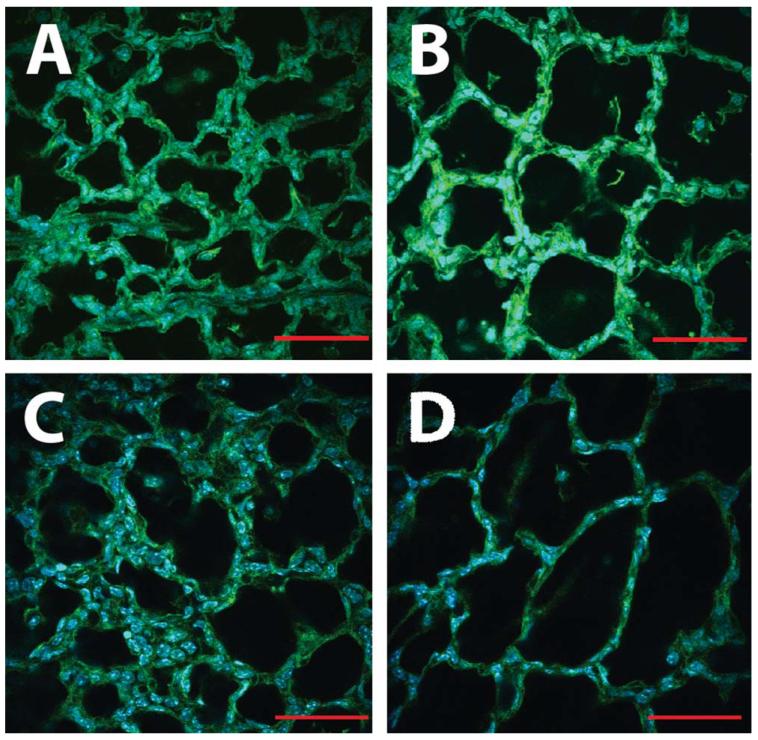FIGURE 2.
Neonatal hyperoxia exposure inhibits murine alveolar development and mimics human BPD. Representative confocal micrographs of fixed, unprocessed lung in 4-day-old neonatal mice continuously exposed to room air (A) or 85% hyperoxia (B) from birth. Even at this early stage, the oxygen-exposed lungs show enlarged, simplified airspaces compared with room air. By 7 days of age, continued hyperoxia exposure has arrested secondary alveolar septation, resulting in room air-exposed lungs (C) that are significantly more complex that those exposed to oxygen (D). Scale bars = 50 μm.

